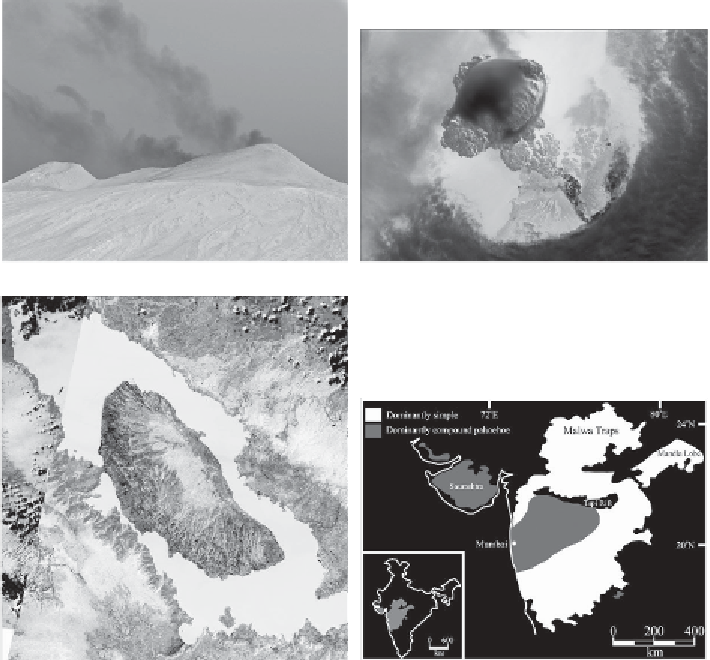Environmental Engineering Reference
In-Depth Information
(a)
(b)
(c)
(d)
Figure 14.1 Photos illustrating different modes of volcanic emissions to our
atmosphere. (a) Persistent
'
background
'
emissions: the non-explosive plumes
emanating from Mt Etna (Italy)
s North East Crater (cone on the right), Voragine
and Bocca Nova (not visible) in August 2004 taken from the North East Flank.
Etna is currently one of the major persistent volcanic gas sources both during and
between eruptive episodes (photo: David Pyle). (b) Sporadic explosive eruptions:
an early stage of the 12 June 2009 eruption of Sarychev Peak (Kuril Islands,
northeast of Japan) taken from the International Space Station (photo: the ISS
Crew Earth Observations experiment and Image Science & Analysis Laboratory,
NASA Johnson Space Center). (c) The largest-scale explosive eruptions on Earth
(M8): the Toba caldera (lake 30 by 100 km) in Sumatra, Indonesia, produced
the Young Toba Tuff eruption 75,000 years ago, with an estimated volume of
2,800 km
3
, the largest volcanic eruption in the last 2 million years. The caldera
probably formed in stages (photo: ASTER image, 28 January 2006, NASA/
GSFC/METI/Japan Space Systems, and US/Japan ASTER Science Team).
(d) Large igneous provinces: map showing the present-day extent of the subaerial
Deccan Traps, India (inset shows their scale compared to India as a whole).
Adapted from Brown
et al
.(
2011
).
'

